When you create online courses, you’re putting a lot of time and effort into something that you want to be successful. But it’s not always easy to sell those courses – especially if you don’t know where to start.
In this video, we’ll discuss all of the different ways to sell your online courses. You’ll learn about evergreen sales and live launches, and get ideas for marketing your courses once they’re up for sale. With the right tools and information, selling your online courses will be a breeze!
Before you sell…pre-sell!
Pre-selling is a great way to get people interested in your course before it’s even finished. You can do this by creating a landing page and offering a free mini-course or preview of what they can expect from the full course. This is a great way to build an email list of potential customers who you can then notify when your course is live.
You can also use social media platforms to build interest and create a buzz around your course. Use hashtags, run ads, join Facebook groups, or partner with influencers who can help promote your course to their followers.
Now that you’ve pre-sold your courses and have an audience interested in taking them, it’s time to start selling!
Selling courses
You’ve just created your online course, or you want to scale up your sales. What should you do?
There are many different ways to sell your courses.
1. Live launches
Live launches are when you have a ton of press and promo surrounding the launch of your course. You do a big promotion of your course all at once. This can be a great way to sell a lot of courses at once, but it does require more planning and effort.
If you want to do a live launch, you need to make sure you have a plan for how you’re going to promote your course and get people interested. You’ll need to create excitement around the launch date and make sure you have a sales page that converts.
Sales pages are especially important for live launches because you need to be able to sell your courses quickly and efficiently.
You can also use webinars or Facebook ads to sell your courses during a live launch.
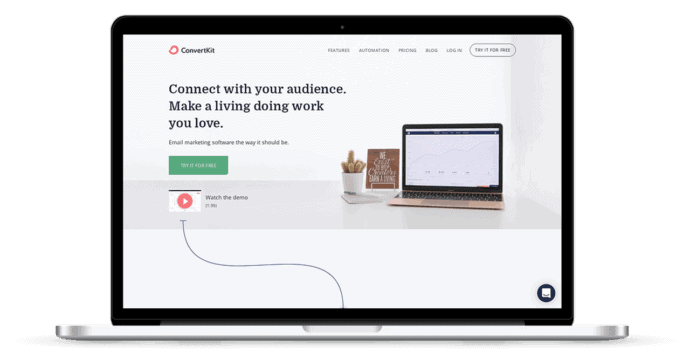

Live launches work best if you have an existing audience who is interested in your course. If you don’t have an audience yet, it might be tough to get people interested in your course.
When done well, live launches can be very profitable. If you’re thinking about doing a live launch, make sure you have a plan and the right tools in place.
2. Evergreen sales
On the contrary, evergreen sales are when you sell your courses without a specific launch date. This means that people can buy your course at any time and you’re not doing a big promotion all at once.
Evergreen sales can be a great way to sell courses because you don’t have to put all of your efforts into one big launch. You can sell your courses gradually over time and still make great profits.
To sell your courses using evergreen sales, you need to have a strong sales page that converts visitors into buyers. You’ll also need to create an email sequence or autoresponder so that people who purchase your course get the information they need right away.
If you want to sell your courses using evergreen sales, you need to make sure you have a solid course sales page and an email sequence set up. These two things will help you sell your courses gradually over time and still make a profit.
3. Combining live + evergreen launches
You can also combine live and evergreen launches to sell your courses. This means that you do a big promotion around the launch date, but people can still buy your course after the launch is over.
This can be a great way to sell courses because you get the best of both worlds – a big promotion to sell a lot of courses at once, plus the ability to sell courses gradually over time.
Having a set price
Let’s say that you have an online course that’s available on an evergreen basis at a certain price.
This would be the self-study version of your course or program, and your target audience may or may not have access to specific parts of the course, such as cheat sheets or pre-recorded videos for immediate use.
Then, with this evergreen course, say that you have two launches for open registration where you will have live elements, so your course is priced higher.
You can create urgency for the live launch with the inclusion of these elements through promotion.
You can also upsell to those who bought the evergreen course to get them to purchase the live version.
This is a great way to sell your courses because you’re giving people the option to buy your course at a lower price, or they can wait and purchase it at a higher price with more benefits.
It’s up to you to decide what pricing strategy is best for your courses. You can experiment with different prices and see what works best for you and your target audience.
Increasing sales and conversions
Having a clear and defined value proposition
What should people expect when they sign up for your course?
If you did your pre-selling well and people have been sold on what your course offers, you can use that and expand and improve upon that in terms of marketing.
You need to be very clear in terms of your course’s value proposition and what it offers to those that sign up. A well-defined value proposition can make all the difference when it comes to selling profitable online courses. If you have a unique selling point, it may be worth discussing that.
Some things to think about when it comes to your course’s value proposition are:
- Who is your target audience?
- What problem does your course solve?
- How does your course solve that problem?
- What results can people expect from taking your course?
Answering these questions will help you create a strong value proposition that will sell your courses.
Preferably, you want your course to be designed for one type of person—your ideal customer. Your content should be focused on the people that you want to sell your courses to.
When you’re clear about who your target audience is, it’s easier to sell your courses. You can create content that appeals directly to them and their needs.
Furthermore, when you know what problem your course solves, it’s much easier to sell your courses because you can speak directly to the pain points of your target audience.
People want to know that your course can help them before they’re willing to part with their money.
You need to be very clear about how your course solves the problem and what results people can expect from taking it. If you can show them that your course will help them in a specific way, they’re much more likely to sign up.
Testimonials
When it comes to selling courses, testimonials and social proof can be very helpful. If you have people that have taken your course and loved it, ask them for a testimonial that you can use on your sales page.
People are much more likely to buy something if they see that other people have had success with it. Testimonials are a great way to show social proof and increase sales.
If you don’t have any testimonials yet, you can also ask for reviews from people that have taken your course. You can post these reviews on your course sales page or social media as part of your marketing efforts to help sell your courses.
Having numbers in these testimonials is helpful as well. For example, if you have a course that teaches people how to make money online, and you have a testimonial from someone saying they made a few hundred dollars in their first month after taking your course, that’s very powerful social proof. Another example is if someone is creating a program, and they’ve had more people sign up after taking your course.
If you can, try to get video testimonials as well. These are even more powerful than written testimonials because people can see the person giving the testimonial and they can hear the emotion in their voice. If the testimonials are posted as YouTube videos, there is more potential for exposure there as well.
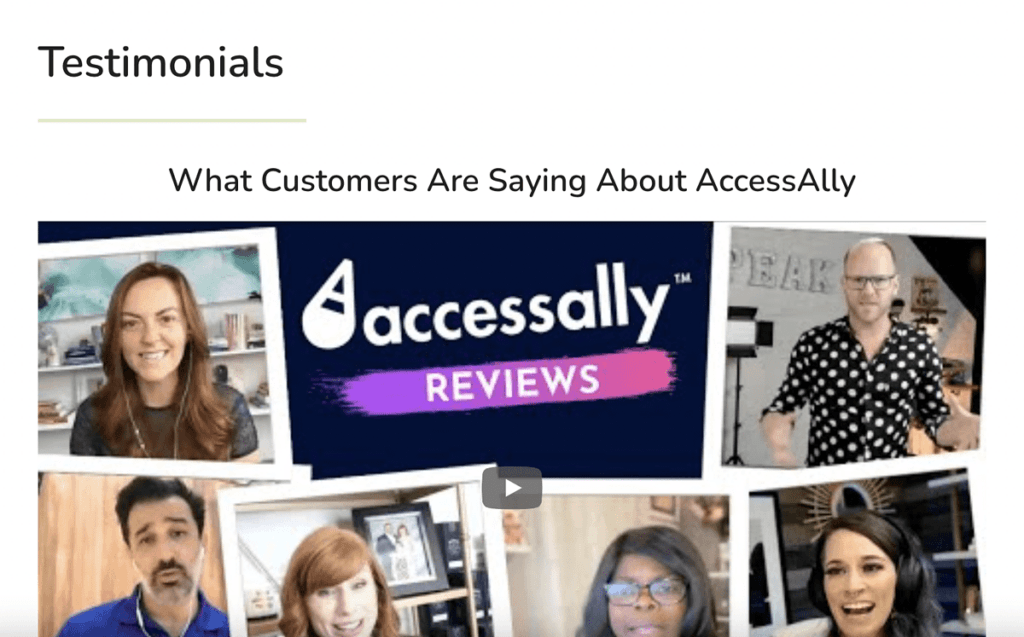

If you don’t have any testimonials yet, that’s okay. You can start by gathering them after you launch your course. Just make sure to get them from people that have actually taken your course and had success with it.
Elements of your offering
Your offering is your course.
There are other considerations to think about with your course, such as the payment or installment plan, discounts, or other bonuses.
Bonuses offered during the live launch or enrollment period could be live training or live sessions, which serve as an effective incentive to get people to sign up now.
You could also offer guarantees, such as a money-back guarantee where if someone isn’t satisfied with your course, they have 30 days to get their money back, no questions asked. There are several different ways to reduce the risk that people feel when they put their money towards your course.
You could say that you are so confident in your course and that you believe in the value your course provides that there are no refunds. It seems a bit backward, but it works.
You could also do limited or timed access, where people only have access to your course for a certain period of time, such as six weeks or three months.


After that, they would need to renew their membership in order to continue having access.
This could be helpful if you want to create a sense of urgency and get people to sign up now before the price goes up or the course is no longer available.
It’s important to think about the different elements of your offering and how you can structure it in a way that will be most successful. These can make all the difference in running a profitable online course business.
Copywriting
For this, doing some customer research can greatly benefit you in your marketing efforts and in helping you run a profitable online course business.


You can interview your potential customers or current customers, and use the exact words or sentences that they use when they’re either describing your course or describing the issues that brought them to look for a solution for their problems (enter solution: your course).
It’s likely that the people you’re researching or interviewing are not the only ones experiencing those problems.
As a result, you can probably get the people looking up those specific words or sentences to sign up for your course.
Again, it’s clear to see that having a specific, ideal customer in mind can help you sell more courses.
You want to be able to address their specific needs with your course and show how your course is the solution to their problem.
The trust factor
You could have the most amazing course in the world, but if people don’t trust you, they’re not going to sign up. Having your target audience’s trust is a crucial part of your digital marketing strategy.
If you’re doing a big launch, you want there to be a lot of buzz and excitement surrounding your course. It helps to get your name out there.
For example, you can secure guest spots on interviews, podcasts, live shows, and others’ posts, and you can appear in publications and blogs. You could be introduced to others’ communities. If all of this is done at once, it could feel like you’re everywhere at once, even if you’re not necessarily well-known.
It gives you an opportunity to make a name for yourself. When you appear everywhere at once, it creates an effect where people may say that “I’ve never heard of this person before, but now that I’ve seen them on multiple podcasts and posts and interviews, I want to check it out.”
It’s important to be strategic about this and not try to do too many things at once.
You want to make sure you’re efficient with your time and that you’re not spreading yourself too thin.
You want to focus on a few key platforms or places where you can make the most impact and get in front of your ideal customers.
It’s also important to be consistent with your branding and messaging so that people know what to expect from you.
Be clear about who you are, what you do, and how you can help people.
If you’re able to do that, you’ll be well on your way to selling more courses.
Using an affiliate program
If you have people who have gone through your course, they can make amazing affiliates.
They may know other people who are like them, and they’ve benefited from your course firsthand so they can speak genuinely and honestly when they talk about the value they’ve gotten from your course.
They can then be given an affiliate link to share with those that they want to refer the course to, which gives them a small percentage of the sale. They’ll be paid a commission for helping you increase your sales.
This is a great way to get more people involved and sell more courses without having to put in a lot of extra work.


It’s also helpful because you can give them resources, like images or pre-written social media posts, that they can use to help sell your course.
Plus, it’s a great way to build relationships with people who you can build long-term relationships with and who can help you sell more courses down the line.
What you need to help sell your courses
If you have not set everything up yet, there are several things you’ll need in place to help you sell your courses.
Sales page or video
This is a crucial element of selling your courses; it is where people will make their decision of whether or not they will sign up for your course. A sales landing page is a stand-alone page on your website that’s designed specifically to sell your course.
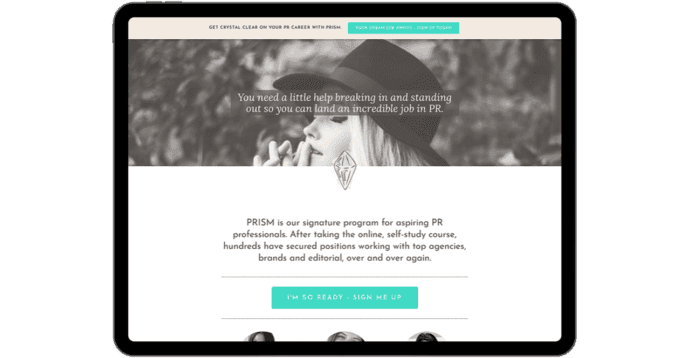

When you’re creating the sales page or video, really go in with a focus on converting people into customers, and hone in on the value that your course provides. You want to discuss why your online course is going to give them the results they want.
This is where you may want to bring in those testimonials, your guarantees (or non-guarantees), your offering, and all of those other elements discussed previously.
Email list building
If you’re not already using an email marketing platform yet, check this out.
Having an email list is the most profitable way to connect with people around both launch and evergreen sales funnels. Email is an important part of your marketing strategy if you want to convert people.
It’s a powerful marketing tool because it’s like you’re having a one-on-one conversation with the reader.
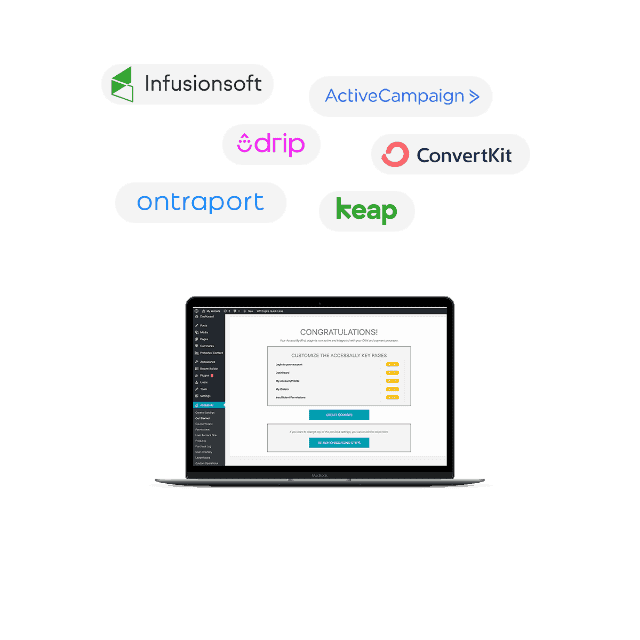

This is because people check their email regularly and you aren’t competing with others like you would with advertising, algorithms, and social media.
You want to have both the main email list as well as a special interest list of people who are interested in the topic of your online course. This can be done by creating a form where people can opt-in to find out more about your course.
When people sign up, they are then added to a sequence of emails that give more information about your course and sell it to them.
This is an important step because you want to make sure you’re staying in touch with people who have shown interest in what you do, and email is the best way to do that.
Payment processor
You need to have a way to sell your courses and get paid, which is where a payment processor comes in.
There are many different ones out there, so you’ll want to do some research on which one will work best for you and integrate it with your website or sales page.
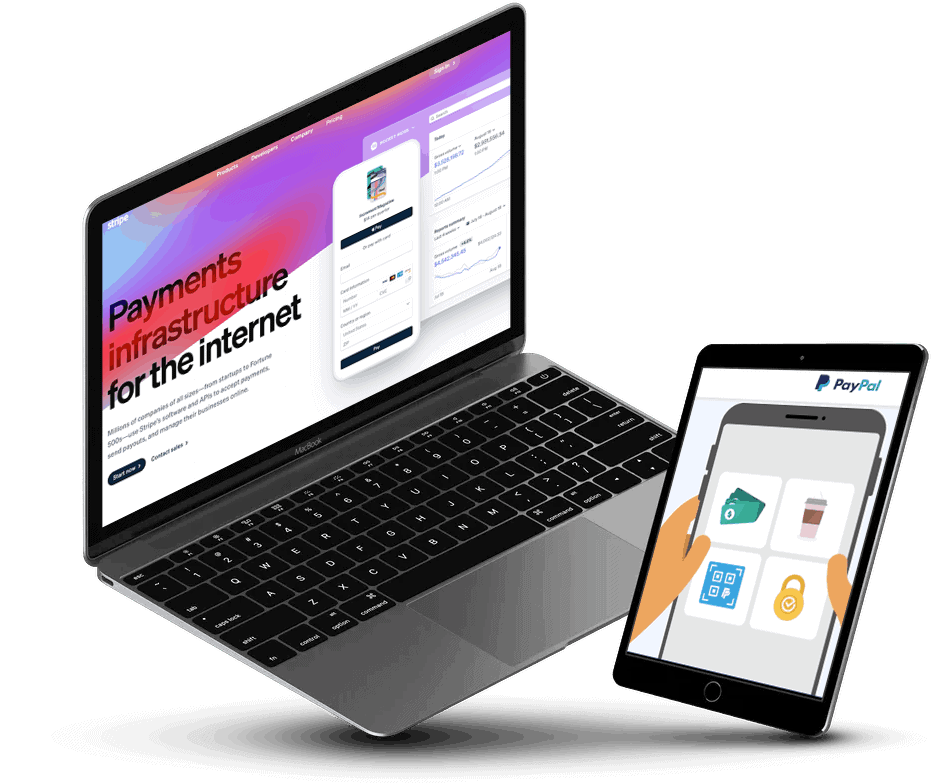

The two biggest ones out there are Stripe and Paypal, but there are many others to choose from.
Each one has its own set of fees, so you’ll want to factor that in when you’re making your decision. Remember to do your research when you’re making a comparison.
You also want to make sure that it integrates well with the tools you’re using and that it’s easy for people to use; no one wants to sign up for a course and then have to jump through hoops to actually pay for it.
Your course platform
This is where your course will live. It’s important to have a platform that’s easy to use, especially if you’re not very tech-savvy.
You want something that’s user-friendly and that has all of the features and integrations that you need to sell your courses effectively.
There are many different platforms out there, so you’ll want to do your research and read some reviews before you make a decision.
AccessAlly is one option. It delivers courses in a customizable and elegant way, fitting the needs of its customers and its customers’ customers. It offers an enhanced learning experience with all of its features and offerings.
In your course platform, you’ll want to put in your course material—this includes your text, your videos, or your downloads.
This is where you put in everything that you want your potential customers to experience in your online courses, such as progress tracking, gamification, certifications, and more.
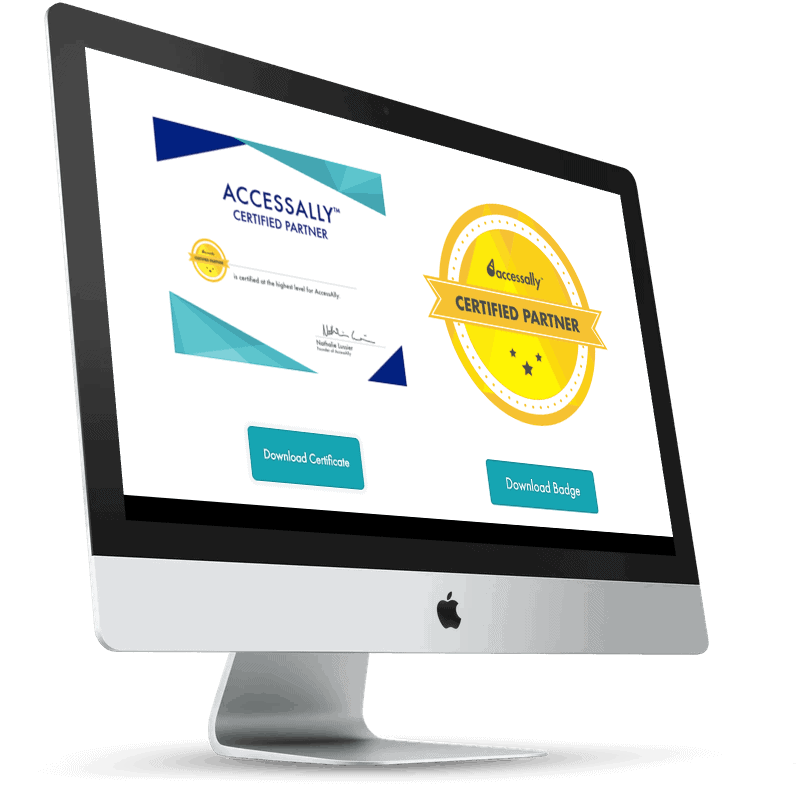

You can even host your affiliate program inside your members area so that when people complete your course, they can be enrolled to become affiliates to help you increase your course sales.
In conclusion…
Selling your online courses can be a daunting task, but if you have the right tools and strategies in place, it can be easy to generate revenue and have a profitable course.
Start by focusing on converting potential customers into paying customers and hone in on the value that your course provides.
Use email list building to stay in touch with those who have shown interest in what you do, and use a payment processor that integrates well with the tools you’re using.
Finally, make sure you have a course platform that is user-friendly and offers all of the features and integrations that you need to sell your courses effectively.
With the right foundation in place, you can start selling your course to paying customers who will gain a lot of value from your online course.




